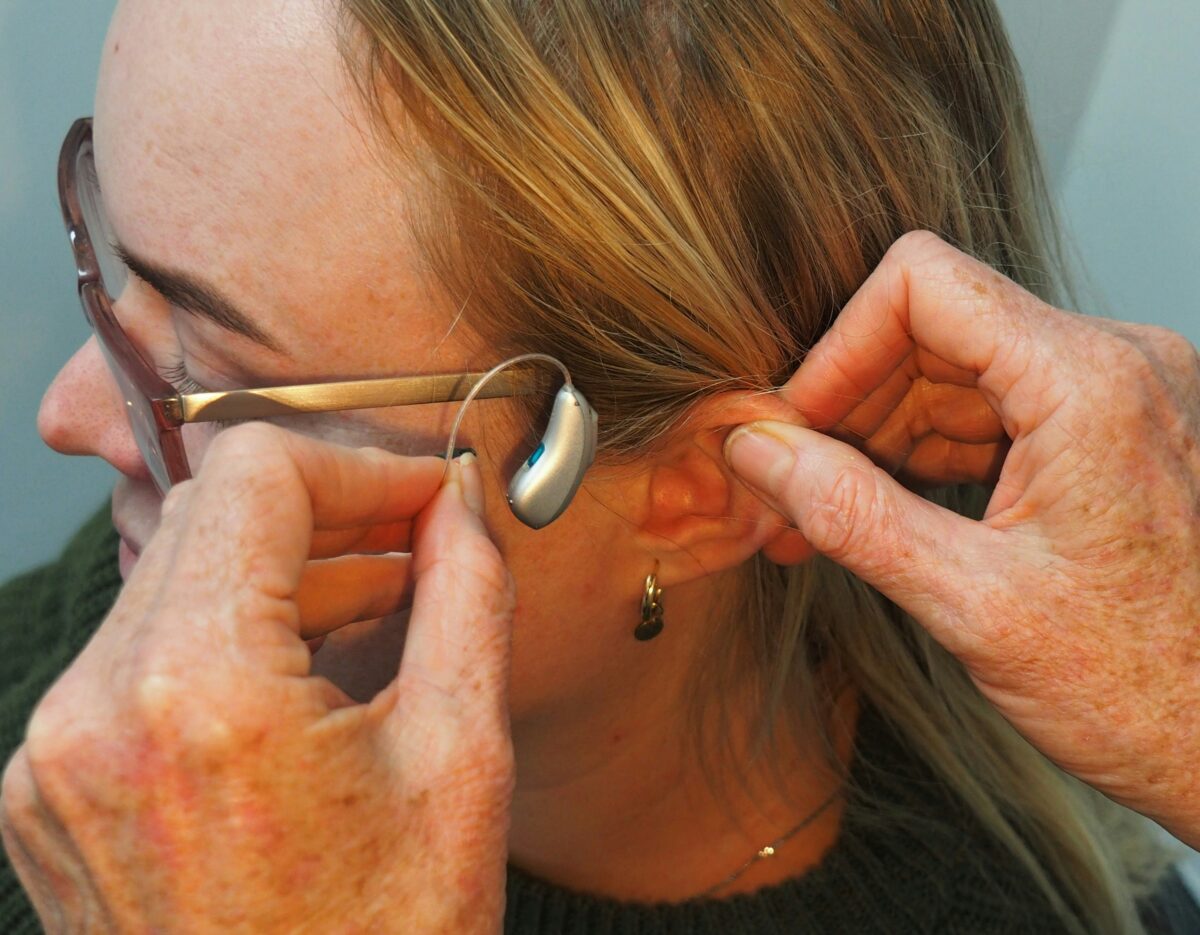Looking for the best hearing aid batteries that won’t let you down? Understandably, you want a combination of reliability, longevity, and value. This comprehensive review will explore top-quality options from trusted brands and give practical advice on getting the most out of your batteries. Prepare to discover which batteries will best suit your auditory lifestyle.
Table of contents
- Key Takeaways
- Evaluating the Best Hearing Aid Batteries for Quality and Endurance
- The Importance of Battery Size and Type in Hearing Aids
- Leading Brands in Hearing Aid Batteries
- Advancements in Rechargeable Hearing Aid Batteries
- Making an Informed Purchase: Battery Life and Cost Considerations
- Tips for Maximizing Your Hearing Aid Battery’s Life
- Where to Find the Best Deals on Hearing Aid Batteries
- Essential Accessories for Your Hearing Aid Batteries
- Navigating the World of Hearing Aid Batteries: Final Thoughts Before You Choose
- Summary
- Frequently Asked Questions
Key Takeaways
- Hearing aid battery selection should balance longevity, quality, and compatibility with specific hearing aid models, with top brands like Duracell, Rayovac, and Renata offering reliable choices.
- Battery size and type are crucial for hearing aid compatibility, and the industry adopts a color-coded tab system for easy identification; advancements include rechargeable batteries providing cost and environmental benefits.
- User convenience and environmental impact considerations are guiding the market, with rechargeable hearing aid batteries positioning themselves as sustainable, long-term investments over traditional disposable ones.
Evaluating the Best Hearing Aid Batteries for Quality and Endurance
In the realm of hearing aid batteries, the old saying “you get what you pay for” holds a lot of weight. The quest for the best batteries involves a careful balance between service life, material quality, and the consistent audio clarity they provide. Renowned brands like Duracell, Rayovac, and Renata have earned their stripes in the market, offering batteries that not only meet but exceed these expectations. It’s about finding a battery that complements your lifestyle and meets specific hearing demands, ensuring that every conversation, note of music, and whispered word is not missed.
While most disposable hearing aid batteries offer service ranging from a mere three days to a commendable ten days, their shelf life can extend up to four years, safeguarding your investment. Hence, weighing both the immediate and future needs of your hearing aid is vital, given that the lifespan of your hearing aid battery can greatly impact your auditory experience.
The Importance of Battery Size and Type in Hearing Aids
Delving deeper into the realm of hearing aid batteries, one quickly realizes that size and type are not mere details but critical factors that ensure compatibility with various hearing aid styles and power needs. The four common sizes available—10, 13, 312, and 675—are more than just numbers; they are keys that unlock the full potential of your hearing aids, each corresponding to specific device requirements and power demands. For those with unique needs, such as cochlear implants, specialized options like the 675p size from HearClear Premium Plus are available.
Moreover, the industry has made it simpler to identify the correct battery size for your hearing aid through a standardized color-coded tab system, where each size is associated with a distinct hue. Thus, whether you’re replacing a battery on the go or stocking up, these codes offer a straightforward path to ensuring you have the right power source for your device.
Leading Brands in Hearing Aid Batteries
Moving forward, it’s vital to acknowledge the industry leaders – Rayovac, Power One, and Duracell. These brands have carved their niches by offering products that stand out for their consistent power, quality engineering, and user-friendly design. With Rayovac’s batteries lasting up to 30% longer than their competitors, Power One’s German precision, and Duracell’s EasyTab design, users are assured of a battery life that harmonizes with their daily routine.
Now, let’s examine what each of these brands has to offer.
Rayovac’s Commitment to Consistent Power and Quality
Rayovac, a brand synonymous with reliability, offers rayovac batteries that are celebrated for their long-lasting power and uncompromised quality in the form of rayovac hearing aid batteries, including the rayovac hearing aid. Imagine the confidence of having a battery that boasts a four-year shelf life, ensuring that your hearing aids remain powered for years to come. Rayovac’s batteries come equipped with extra-long and wide tabs, providing ease of use that’s especially beneficial for those with larger fingertips or limited dexterity. The brand’s commitment to enhancing the auditory experience is evident through its range of products, incorporating Clear Sound Technology across sizes 10, 13, 312, and 675, catering to a diverse spectrum of hearing aids, including options like Panasonic hearing aid batteries.
Rayovac’s dedication is not only to the power and lifespan of their batteries but also to the quality of sound they enable hearing aids to deliver. With the introduction of Rayovac Proline, users can enjoy consistent quality that complements sophisticated hearing aid models, ensuring every sound is as authentic as intended.
Power One’s Precision German Engineering
Power One stands out for:
- Meticulous German engineering that goes into every cell
- Rigorous testing, ensuring unmatched reliability and performance
- Compatibility with wireless devices, offering a seamless connection that preserves sound integrity without compromise
The brand’s commitment to quality is further solidified by its compatibility with wireless devices, offering a seamless connection that preserves sound integrity without compromise.
Established in 1972, Power One’s legacy is built on precision engineering, a testament to its long-standing tradition of manufacturing excellence. The attention to detail is apparent even in the packaging and tabs, which users find on a par with those of Panasonic, reflecting the brand’s dedication to customer satisfaction.
For those who value reliability and power level consistency, Power One batteries emerge as a formidable choice.
Duracell’s User-Friendly Design
Duracell, a household name, brings to the table its EasyTab design, tailored specifically for individuals who may face challenges with fine motor skills. With extra-long tabs that have earned the recommendation of the Arthritis Foundation, Duracell offers a level of convenience in battery replacement that is unparalleled. The brand also prides itself on a generous four-year shelf life, allowing users to stock up on batteries without the worry of a short expiration date.
The design considerations extend to the conditions under which these batteries operate. Duracell ensures that their products are not only easy to handle but also extremely efficient, maintaining performance even in high humidity environments. This focus on user-friendly design and reliability makes Duracell a brand that many can easily find a connection with and trust.
Advancements in Rechargeable Hearing Aid Batteries
The narrative of hearing aid batteries takes an exciting turn with the advent of rechargeable options. These batteries are reshaping the landscape, offering long-term cost benefits, convenience, and a greener footprint compared to their disposable counterparts. With the latest lithium-ion technology providing up to 30 hours of charge, users can now enjoy extended hearing without frequent battery changes, all while contributing to environmental sustainability.
However, one needs to bear in mind that these advantages necessitate daily charging and meticulous planning to prevent downtime.
How Rechargeable Batteries Enhance User Experience
Rechargeable hearing aids are the epitome of convenience for many, especially those who find handling tiny batteries a challenge. With a lifespan that can reach up to 500 charges, these batteries are not only long-lasting but also echo an eco-friendly ethos by reducing waste. The daily ritual of charging, which typically takes about three hours, necessitates effective management of charging units and contingency plans for power outages, ensuring that users are never left in silence.
This convenience aligns with different lifestyles and needs, as rechargeable batteries offer the assurance of a device that’s always ready to use with a simple overnight charge. While planning is essential to ensure the daily charging requirements are met, the positive impact on the environment and the reduction in the frequency of battery handling are compelling arguments in favor of rechargeable hearing aids.
Comparing Disposable and Rechargeable Options
Choosing between disposable and rechargeable hearing aid batteries is not just about preference; it’s about weighing factors such as cost, battery life, and lifestyle.
Here are some considerations to keep in mind:
- Disposable batteries are generally cheaper upfront, but they need to be replaced more frequently.
- Rechargeable batteries have a higher initial cost, but they can be recharged multiple times before needing to be replaced.
- Rechargeable batteries are more convenient, as you don’t have to constantly buy and replace disposable batteries.
- Rechargeable batteries are better for the environment, as they reduce waste.
Ultimately, the choice between disposable and rechargeable batteries depends on your individual needs and preferences.
Disposable batteries, on the other hand, may appeal to those with less stable electricity sources or who travel often, offering a lower upfront cost and the flexibility of easily replaceable power sources. Yet, considering the annual costs of disposable batteries, which can range from $40 to $70 if changed weekly, the long-term cost benefits of rechargeable batteries become increasingly apparent.
Making an Informed Purchase: Battery Life and Cost Considerations
In making a well-informed purchase, both battery life and cost go hand in hand. It’s crucial to contemplate not only the upfront price but also the lasting consequences of your decision. From the annual cost of disposable batteries to the savings offered by bulk purchases, every decision you make determines the cost-effectiveness and longevity of your hearing aid batteries.
Bulk Buying vs. Individual Purchases
For the savvy shopper, bulk buying presents an opportunity to maximize value. Purchasing a pack of 60 batteries for around $20 to $30 can be significantly more cost-effective than buying in smaller quantities. The savings can be considerable, with bulk buyers potentially enjoying up to 15% off the cost of their batteries. However, it’s important to balance the lure of savings with practicality, as batteries do have a shelf life, and buying more than you can use before their expiration date might not be the wisest choice.
Always keep an eye out for expiration dates, and ensure you’re getting fresh batteries that will perform optimally. Some batteries, such as Duracell’s size 13, are available in bulk, offering peace of mind as they can last several months before needing a replacement. This strategy is not just about saving money; it’s about ensuring a consistent supply of power for your hearing aids.
Understanding the True Cost of Batteries
Understanding the true cost of hearing aid batteries goes beyond the price tag on the shelf. It encompasses the initial investment, potential additional expenses, and the long-term savings associated with your choice. Rechargeable batteries may come with a higher upfront cost, including the price of the hearing aids, charging unit, and possible battery replacements, but they can prove more economical over time, offsetting the initial investment.
Comparing prices across different brands and quantities reveals a spectrum of costs, from Duracell’s disposable batteries starting at around $0.32 per battery to Power One’s rechargeable options that begin at $10 per battery. The key is to consider not only the immediate cost but also how often you’ll need to replace or recharge your batteries, as this will determine the true financial impact on your wallet over the years.
Tips for Maximizing Your Hearing Aid Battery’s Life
To get the most out of your hearing aid batteries, a few tips can go a long way in maximizing their life and ensuring optimal performance. Handling batteries with clean, dry hands is a simple yet effective way to prevent contamination and damage. Environmental factors such as humidity, temperature, and altitude all play a role in how long your batteries will last, with high humidity, excessive moisture, and extreme temperatures posing the greatest threats to battery life.
Practices such as:
- waiting a few minutes after removing the protective foil from disposable batteries before inserting them into your hearing aid
- storing batteries at room temperature and avoiding contact with metal objects
- turning off hearing aids when not in use
- opening the battery compartment to prevent moisture buildup
Using zinc air technology in the form of zinc air batteries can improve battery activation and longevity, significantly extending the life of your aid battery.
A hearing aid dehumidifier can be a valuable investment, as it evaporates accumulated moisture overnight, contributing to the long-term health of both your batteries and hearing aid.
Where to Find the Best Deals on Hearing Aid Batteries
Discovering the best deals on hearing aid batteries can be as simple as exploring the aisles of your local pharmacy or as convenient as a few clicks online. Retailers like Costco offer a variety of sizes, while websites such as Microbattery.com and HearingDirect.com provide a wide selection at competitive prices. Additionally, using Health Savings Accounts (HSA) or Flexible Spending Accounts (FSA) can make your purchases more cost-efficient. But the savvy shopper knows that the hunt for the best prices doesn’t end there.
Exclusive Offers and Discounts
Exclusive offers and discounts can be a game-changer for the budget-conscious consumer. By taking advantage of bulk discounts and subscription services, users can save up to 15% on their battery purchases. Websites like Hearing Aid Accessory not only offer discounted multipack purchases but also provide special deals on batteries and accessories, ensuring that you get more bang for your buck.
Moreover, some online retailers offer a price match promise, guaranteeing the lowest prices by matching or beating lower costs found elsewhere. Keeping an eye on sales events and offers can make a significant difference in your annual spending on hearing aid batteries. With a little research and timely action, you can stock up on quality batteries without breaking the bank.
Essential Accessories for Your Hearing Aid Batteries
Once you’ve secured the best hearing aid batteries for your needs, it’s time to consider the accessories that will enhance their performance and longevity. From sturdy protective cases to accurate testing devices, these essentials are designed to ensure your batteries are always at peak performance. Investing in the right accessories not only safeguards your batteries but also adds convenience to your daily life.
Let’s examine the details of these vital accessories for your hearing aid batteries.
Protective Cases for Safe Carrying and Storage
A protective case for your hearing aid batteries is more than just a storage solution—it’s a guardian against the everyday elements that can diminish battery life. Crafted from durable materials, these cases offer the following benefits:
- Keep your batteries organized
- Prevent batteries from contacting one another, which could lead to short-circuiting and damage
- Compact designs, often with a keychain attachment, make these cases perfect for on-the-go individuals who need power at hand.
With secure closure mechanisms and the capacity to hold multiple batteries, these cases are an ideal accessory for anyone looking to ensure their batteries remain safe and ready for use. Some cases even accommodate specific battery models, such as the Duracell size 10, ensuring that your batteries are snug and protected from being dislodged or lost. The use of quality PP material in their construction further reinforces the protective nature of these cases, ensuring that your batteries remain shielded from the rigors of daily life.
Accurate Testing Devices for Optimal Performance
The true strength of your hearing aid batteries, or hearing aid batteries power, can be measured with the help of accurate testing devices. Such tools are invaluable, allowing users to swiftly check power levels and proactively manage battery replacement, thereby avoiding unexpected hearing aid shutdowns. These testers are not only portable but also affordable, with some models designed to attach to keychains for accessibility anywhere, anytime.
Incorporating the use of a battery tester into your routine ensures you can maximize the usability of each battery, extracting its full potential before a replacement is necessary. It’s a simple step that can greatly improve performance and provide peace of mind. Here are the benefits of using a battery tester:
- Maximizes the usability of each battery
- Extracts the full potential of the battery
- Helps determine when a replacement is necessary
- Improves performance of your hearing aid
- Provides peace of mind knowing your hearing aid will have the power it needs when it matters most.
Navigating the World of Hearing Aid Batteries: Final Thoughts Before You Choose
As we approach the conclusion of our discussion, it’s essential to ponder the major factors that will influence your selection of hearing aid batteries. Your personal lifestyle, specific auditory needs, and the diverse performance of the batteries are all critical elements that shape your decision.
Whether you prefer the long-term benefits of rechargeable batteries or the convenience of disposables that offer varying lifespans, the market caters to every preference. Remember, choosing the right battery is not just about the immediate benefits but also about how it fits into your life in the long run.
Consider how each option complements your routine and hearing requirements, and let the following factors be your compass as you navigate this vast world of choices:
- Quality
- Manufacturer reputation
- Service life
- Capacity of the batteries
Summary
In summary, the journey to finding the best hearing aid batteries is one of understanding your needs, recognizing quality, and appreciating the advancements in battery technology. From the reliable power of Rayovac to the engineering prowess of Power One and the user-centric design of Duracell, the options are plentiful. With rechargeable batteries offering a sustainable and cost-effective alternative, and accessories that protect and maintain their performance, you are now equipped with the knowledge to make an informed choice. Embrace the freedom of clear hearing and let the batteries you select elevate your auditory experience to its fullest potential.
Frequently Asked Questions
Hearing aid batteries typically last between three to ten days for disposable batteries and up to five years for rechargeable batteries with proper care.
Yes, buying hearing aid batteries in bulk can be cost-effective and offer potential savings, as long as you can use them before they expire.
Yes, rechargeable hearing aid batteries are a more environmentally friendly option as they generate less waste compared to disposable batteries, reducing environmental impact significantly.
When choosing a battery brand, look for consistent power, long battery life, quality materials, and sound performance. Consider brands like Rayovac, Power One, and Duracell.
Yes, using protective cases and hearing aid dehumidifiers can help extend your battery life by preventing damage and moisture build-up.







